There is no greater way of bonding with friends and family than cooking together over an open fire. Some of my best and earliest memories involve roasting marshmallows and hotdogs over the fire at my grandfather’s ranch. The tradition of cooking over a fire continued long after David and I got married with yearly bogrács parties (a bogrács party is a get-together where you cook soup in a large cauldron – the bogrács – over an open fire).
One of my favorite open fire cooking activities is a szalonna sütés or bacon roast. For those of you that have not have the privilege of attending one of these events, I’ll break it down for you.
Basically, all that is needed is an open fire for cooking, several skewers for holding your szalonna, thick slices of crusty bread to catch the drippings, onions and vegetables to make it a meal. Oh, and you need szalonna, and lots of it!

Little Man steals some veggies while he waits and Big Guy and Gabo’s sweetie play on an iPad in the garden.
So just what is szalonna? Szalonna is the Hungarian word for bacon, but it isn’t anything at all like the bacon we grew up eating with our eggs and toast. Szalonna is thick cut slab bacon and you won’t find it in your average grocery store but you can generally get it at European markets, butchers or specialty shops. On a side note, Hungarian’s call American style bacon “bacon szalonna” which would translate into “bacon bacon.”
Anyway, back to the szalonna sütés. The first step is building a fire. You want to get a good sized wood fire going (do not use starter fluid or your szalonna will taste like starter fluid and that’s just gross) and then let it burn down a bit because you don’t want to place the szalonna directly into the fire, but rather over the hot coals that the fire has made. As the fire is getting started, someone needs to prepare the bacon, vegetables and bread.
The large slab of szalonna needs to be as fatty as possible with very little meat (I know, super healthy). You cut the slab into decent sized pieces for cooking and score the top in a cross-hatch pattern. Our pieces were probably about 1.5”x1.5”x2.5” but you could make them a little bigger. Once they are cut, place the szalonna on the end of your skewer along with a small onion (we like red onions). The onion serves to both flavor the bacon and as a stopper to keep it from falling off of the skewer as it cooks (because bacon grease is slippery). Now you’re ready to start cooking.
You want to have a plate with your bread sitting right at your feet as you roast your szalonna over the fire because the whole point of this process is to collect the bacon drippings onto your bread. There are several ways that you can approach the bread portion of this process. I tend to be a purist and like the plain bread with the bacon drippings. Others prefer to spread their bread with sheep’s milk cheese or top it with vegetables first. The important thing to remember is that there is really no wrong way to do it and experimenting with flavors can be fun! So, once your szalonna is starting to cook, it will start to drip grease. When this happens, you want to carefully move the szalonna over your bread and collect the drippings (this is the point of the entire process). Once it stops dripping onto the bread, return the szalonna to the fire and continue cooking/dripping until your bread it completely covered (some people like to completely saturate the bread). The szalonna can keep going until it starts to get crispy at which point in can be cut up and eaten or discarded. It is very important that you don’t char the szalonna or it will become extremely bitter.
Once your bread is adequately soaked in bacon grease, it is time to eat. You’ll want lots of veggies to accompany the bread, especially tomatoes, peppers, red onions and cucumbers. To make the event truly Hungarian, you should also toast with a shot of pálinka (a traditional Hungarian fruit brandy). I am told that the pálinka helps cut the grease to avoid indigestion. I’m not sure if this is true or not but a szalonna sütés just wouldn’t be the same without it.

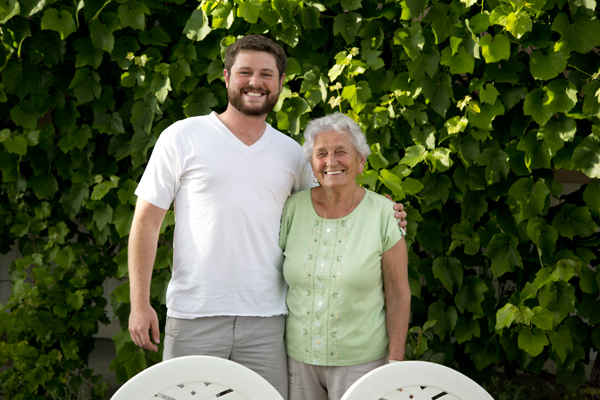

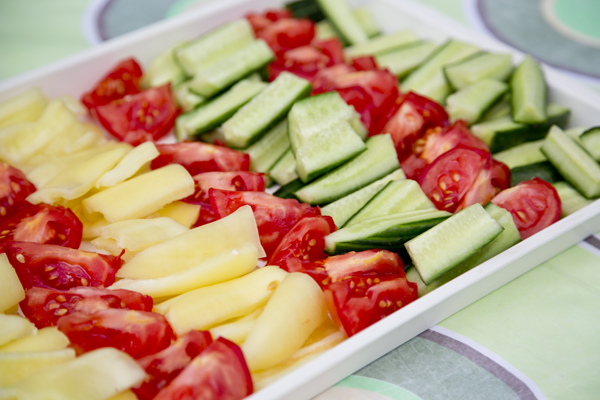
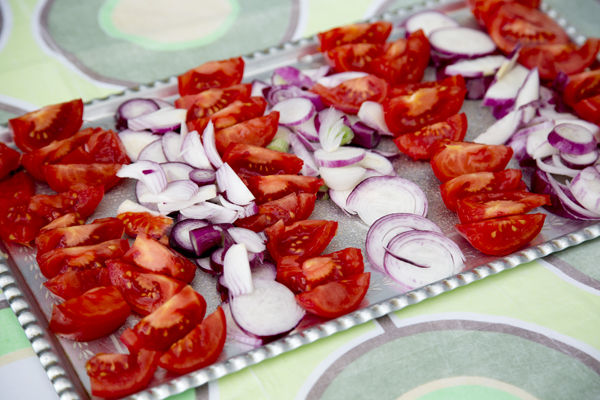

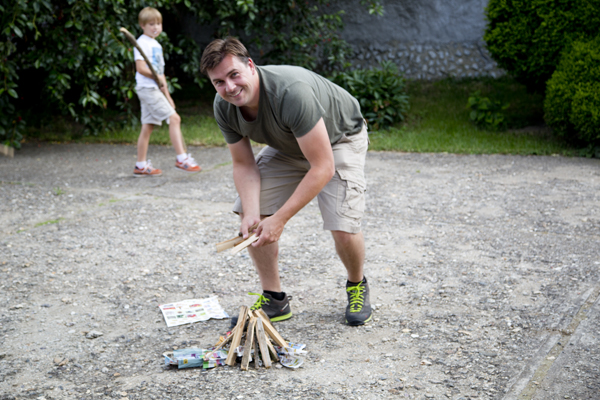
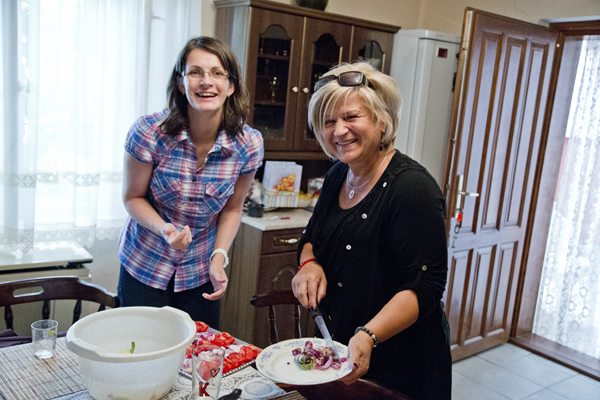


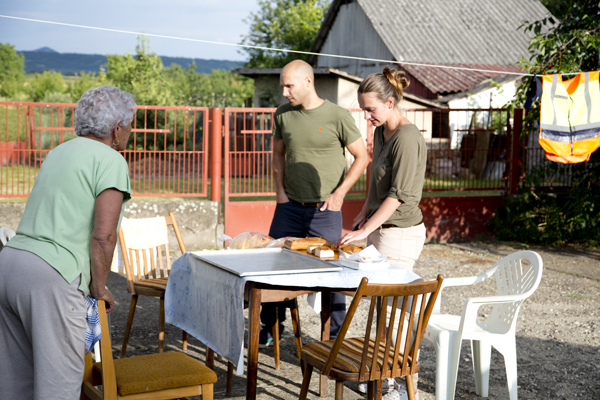
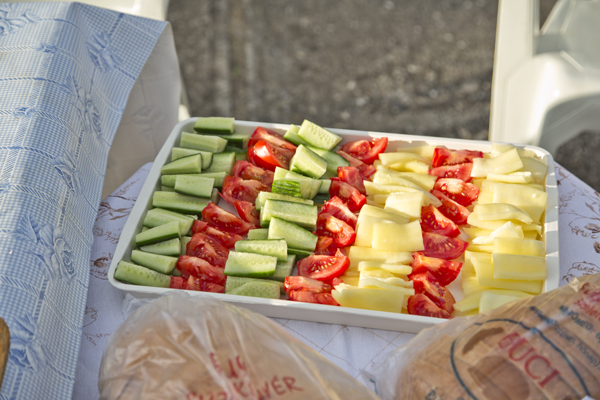
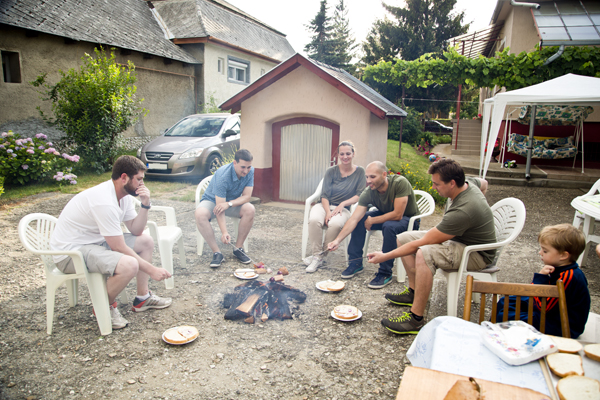
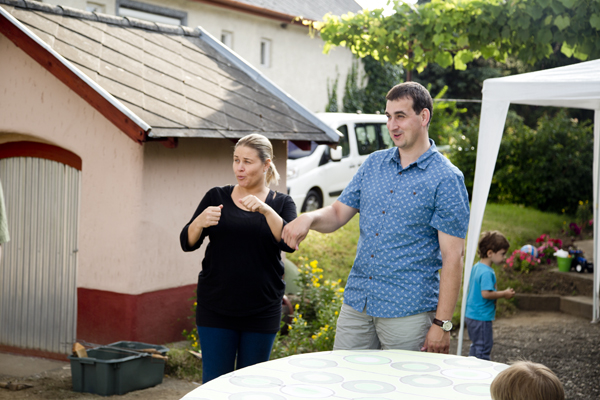
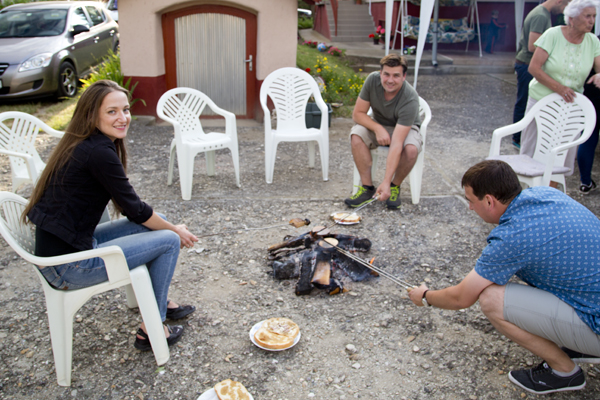



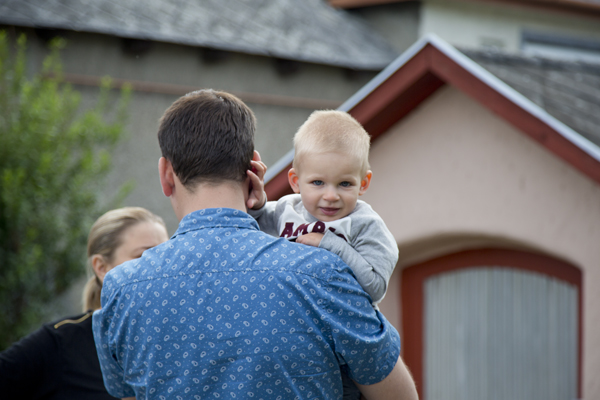
I was so excited to see your blog on this subject . My dad is 100% Hungarian ,and recently he found out about a Hungarian festival not too far from us, so he took me and my three girls. W had so much fun and the smells mad me long for my grandmothers house. My dad was sad though because he wanted to eat something he remembered as a kid, szalonna sites. I was curious about the whole event and wanted to learn more. I just called my dad to tell him about your site and it rekindled his desire to bring this great tradition to His five granddaughtdrs. We all can’t wait for this weekend to have our own szalonna sites. Thank you for your inspiration!
I am so glad that it was helpful and I wish you the best of luck on you own szalonna sütés! It is such a wonderful bonding experience and I’m sure that it is going to be incredibly special for your dad and his granddaughters!
This brought back so many memories… This was always a treat for us… I’m almost 60, it’s time I bring this back to my family…. Thanx for sharing..?
Hi Jennifer!
I know this is an older post, but I’ve viewed it more times than you could possibly know. Both my parents are magyarok and I spent so many summers with my Nagymama, Aunts and Uncles in Hungary.
I’m planning a Szalonna Sütés for my family/extended family via a houseboat trip on the lake.
I cannot tell you how envious I am that you still have relatives in Hungary!!!
Any advice would be so appreciated!
Love,
Janet
Hi Janet! I am so incredibly sorry for the late reply but I have been away from my computer for quite some time. I guess my only main advice is to look for the fattiest slab bacon you can find (your butcher should be able to help you out with this) and extra bread because you will always need more than you think. It also helps to have marshmallows if little kids are around because they can become impatient waiting for the bacon drippings to be ready, but roasted marshmallows are a quick fix for impatient children (and adults too). Usually when we are doing a szalonna sütés, we will also roast sausages over the fire. Honestly though, my biggest advice is just to have fun. This is one of those activities that children will remember forever!